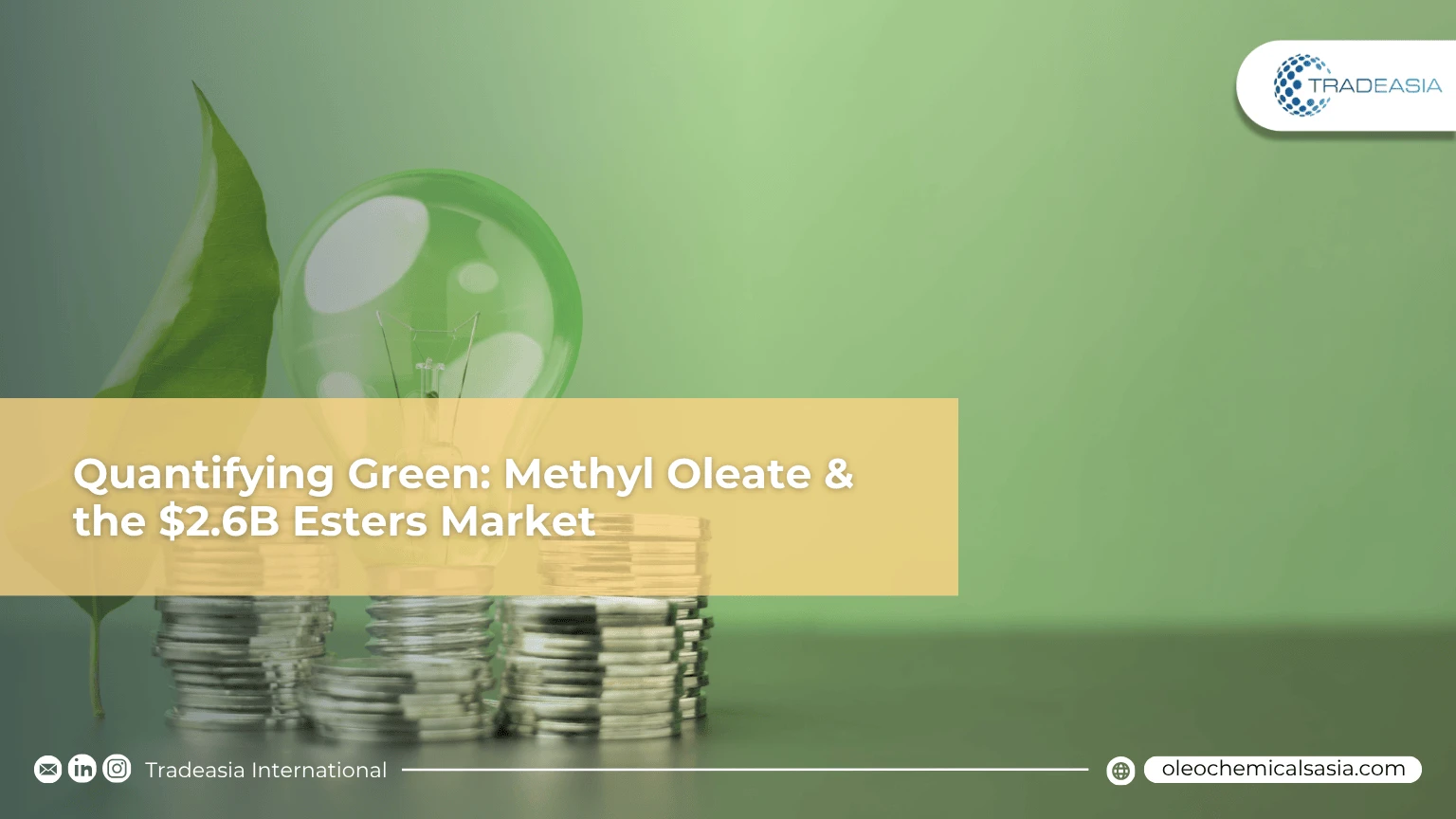Quantifying the Green Advantage: Methyl Oleate's Biodegradability and the $2.6 Billion Sustainable Esters Market

Table of Content
- The Proof in the Performance: Beyond the Marketing Slogan
- Capturing High-Value, Eco-Conscious Demand
The global oleochemical industry is undergoing a paradigm shift. Sustainability is no longer a niche preference; it is the core driver of commercial value. At the forefront of this change is Methyl Oleate (MO), a palm-derived ester whose compelling environmental performance is directly responsible for its robust market traction. This chemical is not just riding a trend; it's defining the future of bio-based chemistry.
At a time when securing reliable, certified supply chains is critical—a specialization that Tradeasia International has mastered across its global palm and oleochemical network—the focus must be on quantifiable environmental gains. MO’s dominance is clearly reflected in the numbers: its segment value, already at $623.9 million in 2024, is driving the total Oleate Esters market towards an estimated $2.6 billion by 2034. This spectacular growth trajectory is backed by a powerful 4.2% Compound Annual Growth Rate (CAGR).
The Proof in the Performance: Beyond the Marketing Slogan
The reason for this financial optimism lies in MO's technical specifications. Businesses seeking to de-risk their formulations and satisfy stringent regulatory bodies rely on MO’s proven status as "readily biodegradable." This classification is critical, confirming that the ester achieves high levels of breakdown—often >60% degradation within 28 days—a stark contrast to recalcitrant, petroleum-derived counterparts. This environmental superiority translates into lower long-term liability and reduced end-of-life costs for industrial clients.
Capturing High-Value, Eco-Conscious Demand
The demand landscape shows a clear preference for sustainability, particularly in consumer-facing sectors. The Cosmetics and Personal Care segment remains the largest and most aggressive adopter, contributing $538.6 million in 2024 and sustaining a high 4.3% CAGR. These manufacturers are actively substituting traditional silicones and mineral oils with bio-based emollients like MO. However, this high demand, coupled with feedstock market volatility—where CPO benchmark futures have recently climbed to 4,594 ringgit/metric ton in October 2025—demands strategic sourcing. For traders and buyers, prioritizing MO supply that delivers on both purity and verifiable sustainability is the only path to long-term market capture.
Sources:
-
Global Market Insights: Oleate Esters Market Size, Share, Trends & Forecasts - 2034
-
OleochemicalsAsia.com: Understanding the Superior Biodegradability of Palm-Based Methyl Oleate
-
Hellenic Shipping News Worldwide: Palm hits 7-month closing high on Indonesia's biodiesel plans, strong Dalian oils

Leave a Comment